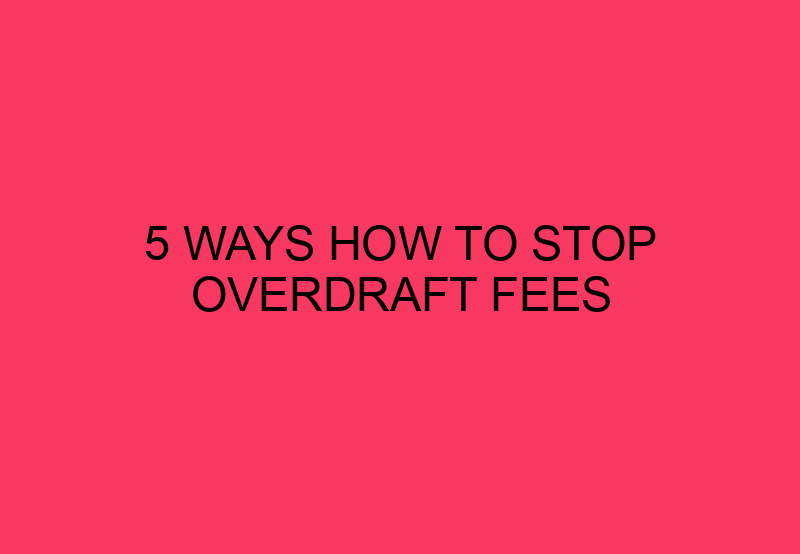If you don’t keep a close eye on your checking account balance, you could end up paying extra if you make a debit purchase or write a check without enough money in your account to cover it. The average fee for going over your limit is around $33, and your bank could charge you more than one fee in one day. so, How To Stop Overdraft Fees?
At some point, it’s likely to happen to you. Maybe a deposit you were waiting on didn’t clear as quickly as you thought, or maybe you just weren’t paying attention to your balance. Everyone makes mistakes every now and then, yet is there anything you can do to get out of it?
What is an Overdraft?
When your bank processes a transaction but you don’t have enough money in your account to pay for it, this is called an overdraft. For instance –, if you had $50 in your checking account and used your debit card to buy something that cost $60, you would end up going over by $10.
When you have an overdraft, the transaction may still go through if your bank decides to make the payment for you even though there isn’t enough money in your account. Your account balance will be negative until you put in enough money to pay the overdraft and put it back in the black. And while that might not seem like a big deal, overdrafts have fees.
5 Ways How To Stop Overdraft Fees
-
Don’t sign up for overdraft protection
Your bank decides whether or not to cover a transfer of funds that would put your balance in the red, but there is one thing you can do. If you opt out of an overdraft coverage program, your provider won’t cover one-time debit card or ATM transactions or charge overdraft fees on them. It can automatically pay for checks and recurring debit transactions without asking you.
-
Set up low balance alerts
Make it easy to check your balance by automating processes. Check with your provider to see if you can set up email or text alerts to let you know when an account falls below a certain level you choose.
-
Connect to a different account
Your bank might also offer a service called “overdraft protection transfer.” This is done by linking a checking account to another account with the same provider, like a savings or credit account. When your checking account doesn’t have enough money to cover a transfer of funds, money will be moved from of the linked account to make up the difference. There is usually a fee, but it’s less than what you’d pay for overdraft coverage. If you link a credit account, like a credit card or line of credit, you may have to pay a transfer fee and interest on the amount you went overdrawn.
-
Sign up for protection against going over
You can also sign up for overdraft protection if you don’t want to risk having your payments turned down. This is done by linking your checking account to another account so that you don’t have to pay an overdraft fee if you go over your limit. Then, if you have a transaction that would put your checking account in the red, the money will be taken from your backup account. For example, Synovus offers overdraft protection that lets you link your checking account to another Similar issues deposit account (such as a savings account). Then, if you overdraw, the transaction is covered and you pay a $10 fee for the funds transfer, which is much less than an overdraft fee.
-
Talk to your bank.
If you’re a good customer but made a mistake and went over your limit, you should call your bank and ask them to waive the fee. If you don’t overdraw your account often, the bank may not charge you an overdraft fee.
